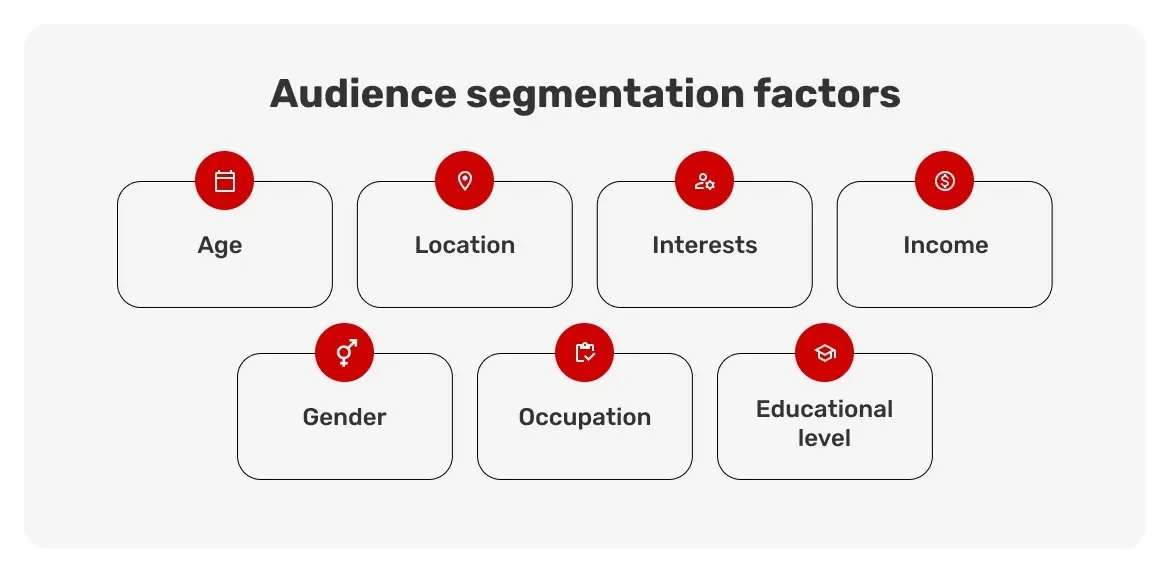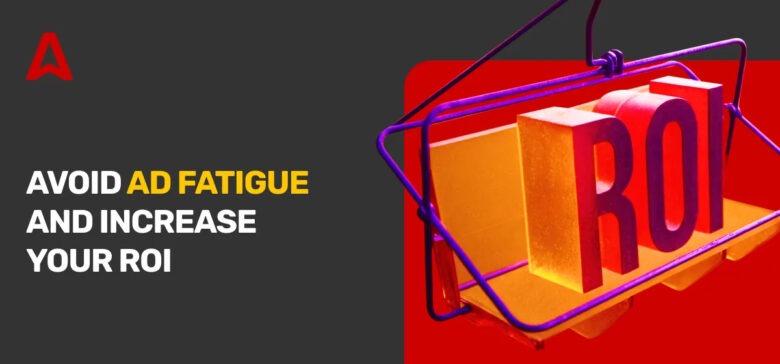Have you ever seen something so often that it becomes annoying to look at? That’s the idea of ad fatigue. Audiences that repeatedly see your ad can become tired of it, reducing its effectiveness.
Online advertisers need to understand ad fatigue and take steps to mitigate it. That’s why we’ve written this detailed guide to advertising fatigue and how to avoid it.
What is ad fatigue?
Ad fatigue occurs when an audience is overexposed to the same ad and becomes bored of it. When the target audience becomes over-familiar with an ad, they’ll be less likely to engage with it, causing lower returns for the advertiser.
Advertisement fatigue affects many brands, especially those with big marketing budgets. If you’re running a long ad campaign, you should constantly adjust your targeting to avoid overexposing a single audience to it.
To be clear, ad fatigue doesn’t mean an audience gets tired of your brand. Instead, they’re tired of repeatedly seeing the same ad creative or ads in general. You can target a single audience but frequently change ad creatives and wisely doze it to avoid fatigue.
Causes of ad fatigue
1. Overexposure
Overexposure is the primary cause of ad fatigue, as people get tired of seeing the same thing repeatedly. This often occurs when brands target small audiences and don’t monitor ad frequency. Hence, people can see the exact ad creative multiple times and understandably get bored of it.
2. Creative assets repetition
Some brands run different ads but use the same set of images, videos, headlines, and call-to-actions. This can cause the target audience to become overfamiliar with your ads and reduce engagement. It’ll look like your brand has nothing new to offer, damping ad effectiveness.
3. Wrong audience targeting
Targeting the wrong audience increases the chances of viewers getting tired of ads. It’s one thing to repeatedly show the same ad to a relevant audience and another to show it to an uninterested audience. The former can tolerate it, but the latter will likely get annoyed.
With 36,000+ direct publishers with traffic from 248 GEOs, Adsterra lets you showcase ads to the perfect audience and get the best results.
4. Infrequent campaign updates
Some brands run long campaigns but neglect to update them frequently for better results. Because of changing trends and customer behavior, a “set it and forget it” approach isn’t the best. To avoid fatigue, it’s advisable to frequently update ad creatives and audiences.
Symptoms of ad fatigue
1. Reduced click-through rate (CTR)
Click-through rate (CTR) is the ratio of clicks to impressions of your ad. The first symptom of ad fatigue is declining click-through rates of your ads. Suppose you had an average click-through rate of 5% and suddenly notice a drop to 3%. It can be a symptom of ad fatigue.
2. Fewer impressions
Ad fatigue doesn’t only affect click-through rates. It can also lead to fewer impressions, as reduced engagement signals to ad networks that your ad is losing relevance, causing them to show it less.
Low engagement can trigger a negative cycle of your ad being suggested less to your target audience. Hence, learning how to avoid ad fatigue is essential for every advertiser.
3. Negative feedback
Negative audience feedback is a common sign of ad fatigue. For instance, you might observe increasingly negative comments on your social media ads. You might also observe such comments on your landing page form. It’s a sign of ad fatigue that needs to be addressed urgently.
How to avoid ad fatigue?
1. Monitor your ad campaigns
Ad fatigue prevention begins with constantly monitoring your ad campaigns. This will help you determine whether your audience is experiencing fatigue. The main factors to monitor are ad frequency and click-through rates (CTRs).
- Frequency is the average number of times people view your ad. Although it varies, 1 to 5 times a week is the sweet spot for most niches. Anything near or above 10 is usually too high and known to cause ad fatigue.
- As mentioned, CTR is the ratio of clicks to views of your ad. Monitor your historical CTR and compare it to the present. A reduced CTR compared to historical data is a sign of ad fatigue.
Adsterra provides an interactive dashboard to monitor your campaign performance and know when to adjust it for better results.
2. Change your ad visuals
You can frequently change the images or videos of your ad campaigns. This way, people won’t get tired of repeatedly seeing the same thing.
Suppose you’re an electronics vendor selling PCs and smartphones. You can change the device showcased on your ad poster each week. Hence, people won’t get tired of repeatedly seeing the same devices and assuming that’s only what you sell. New things attract new eyeballs and conversions from your ads.
3. Rotate call-to-actions
An ad’s call-to-action (CTA) is crucial to its effectiveness. Ad fatigue often stems from people being tired of seeing the same CTA. Hence, you can avoid it by changing your ad CTAs frequently.
Suppose your current ad has a “learn more” CTA button. You can change it to “sign up,” “contact us,” “register now,” “find out more,” or other relevant CTAs. Some CTAs entice people to click more, improving ad conversion rates.
4. Change ad formats
Changing ad formats is another effective way to avoid audience fatigue. However, you don’t have to change this as frequently as visuals and call-to-actions. Once a month is a good starting point.
The format to choose depends on your ad network and medium. If you’re advertising on social media, you can switch from image to video or carousel ads. If you’re using an ad network like Adsterra, you can swap a Popunder ad for Smartlink or Banner ads. What’s necessary is that your audience sees new ad formats, avoiding fatigue.
Adsterra offers a variety of ad formats, including Popunders, Social Bar, Smartlink, and Native Banners. Join our network and leverage these ad formats to grow your audience.
Best practices for managing ad campaigns
1. Audience segmentation
Segmentation entails dividing your target audience into smaller groups so you can serve personalized ads.
Different groups respond differently to ad messaging. For example, what works well for a younger audience won’t necessarily work for an older audience. Hence, you can separate your audience according to age and serve each group with personalized ads, reducing the chances of ad fatigue.
For instance, you can use Gen Z slang for the appropriate age group (13 to 28) and more formal language for older audiences (28 to 50). This way, each group will respond better to the ad campaign.

2. A/B testing
A/B testing entails comparing multiple versions of your ad to see which performs better. Then, you’ll stick to the pattern that performs better over time.
Suppose you’re running an ad for a shoe store. You can run similar campaigns but with different CTAs and visuals. If one generates more conversions, you’ll stick to it.
A/B testing helps improve ad results and reduce fatigue. It also enables you to keep up with changing trends and customer behavior.
Measuring ad fatigue
You can measure ad fatigue using the following factors:
- Ad spend. Spending more on ads but getting fewer conversions can be a sign of ad fatigue. Your marketing budget’s ROI is an easy way to evaluate ad fatigue.
- Frequency. The number of times your ad is shown to the same viewer constitutes its frequency. A high frequency (10 and above) indicates ad fatigue.
- Click-through rates (CTR). Reduced click-through rates are a common sign of ad fatigue.
Most ad networks and social media platforms let you monitor the above metrics from a dashboard. You can compare present metrics with past ones to evaluate ad fatigue.
Conclusion
Ad fatigue negatively affects many brands, and they often don’t understand the problem. We’ve described what ad fatigue is, its symptoms, and how to avoid it.
Choosing a reliable ad network like Adsterra helps you avoid ad fatigue. Our platform lets advertisers target audiences in detail, monitor real-time ad metrics, and easily adjust ad creatives to get better results. Sign up today and create high-converting ads.
References
- Ad Fatigue: Slaying the Silent ROI Assassin – Eskimi
- How E-Commerce Businesses Can Bounce Back From Ad Fatigue – Forbes Councils
- Ad Fatigue: What It Is & How to Prevent It – Neil Patel
Ad fatigue FAQ
What is an example of ad fatigue?
An example of ad fatigue is repeatedly seeing the same ad banner or just too many banners on multiple websites, usually from brands with big ad budgets. Many people get annoyed and block these banners from their browsers, reducing conversions for the advertiser.
How do I check for ad fatigue?
You can check for fatigue by monitoring your ads’ frequency and click-through rates. Increased frequency and reduced click-through rates are signs of your viewers getting fatigued, necessitating ad changes.
Why does ad fatigue happen?
Ad fatigue is the natural phenomenon of people getting tired of repetitive ideas. When your audience repeatedly sees the same ad, they become too familiar with it and lose interest. Every advertiser needs to take steps to avoid ad fatigue.
